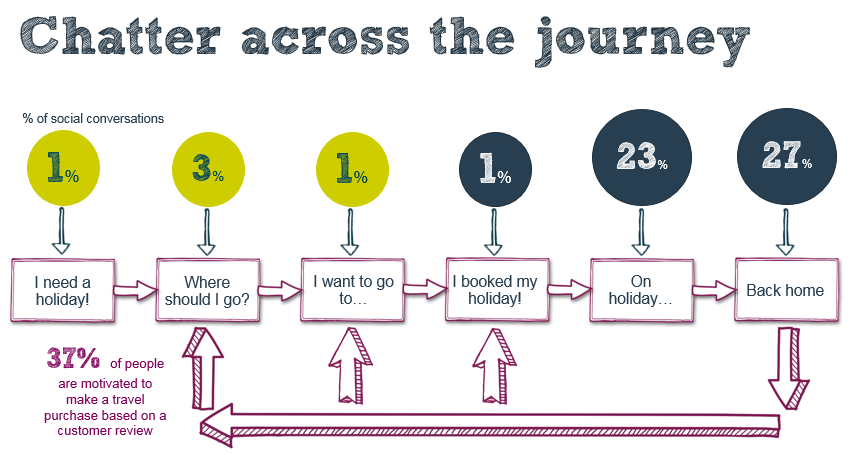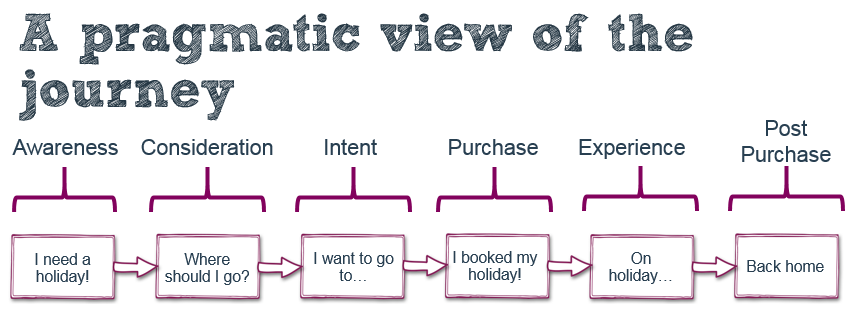May 13, 2015
The days of visiting actual travel agents and waiting on faux leather couches to be served whilst being visually accosted by A1 posters of smiling families splashing in the waves and creatively bankrupt taglines (“New Zealand! Bring Your Mum!”) are long gone.
A holidaymaker’s entire journey from skiving off work to Google “best holiday destinations” to sipping Mai Tai’s in Tahiti can now be tracked, analysed and appropriated by brands looking to increase their ROI through social and digital channels.
However, without a solid understanding of the phases of the customer journey, travel brands are shooting in the dark when it comes to focussing marketing activities and planning effective social content.
The social journey in six stages
A caveat before we begin: of course the social journey depicted below is not a linear one in the real world, but for the purposes of isolating data trends and structuring unstructured travel conversations, we are laying the journey out as follows:
This structure allowed us to “train the machine” (third gen monitoring tool Crimson Hexagon in this instance) to recognise posts and tweets from consumers that fitted into the user journey above.
We went ahead and analysed over 1 million of these over a year-long period in order to give brands better decision making information, benchmarks and a clear view of opportunities to increase value from social media (you’re welcome!)
Our findings? Experience (ie. when people are on holiday) and post purchase (ie. when they return home with memory cards full of “look-how-awesome-our-holiday-was!” content) have a significant impact on the start of the customer journey.

What this means for travel brands looking to boost ROI through social
Simply put, if you are a travel brand that wants share of voice, consider the latter end of the customer journey.
Post-purchase pics, reviews and tweets resonate at the awareness and consideration phases of the customer journey, which presents a compelling argument to build this content into your digital and social marketing plans.
This correlates with research from Statista that shows that 44% of 18-34 year olds and 28% of those between 35-49 years said they were likely to seek opinions via social media when travel planning.
Test your content, analyse your online activities and tracking links according to their position in the journey and you should come away with a far better understanding of not only where and how social assists purchase, but also how to use it effectively to boost ROI.
To download the full, free Social Travel report, click this link and tweet us your views @iftweeter
